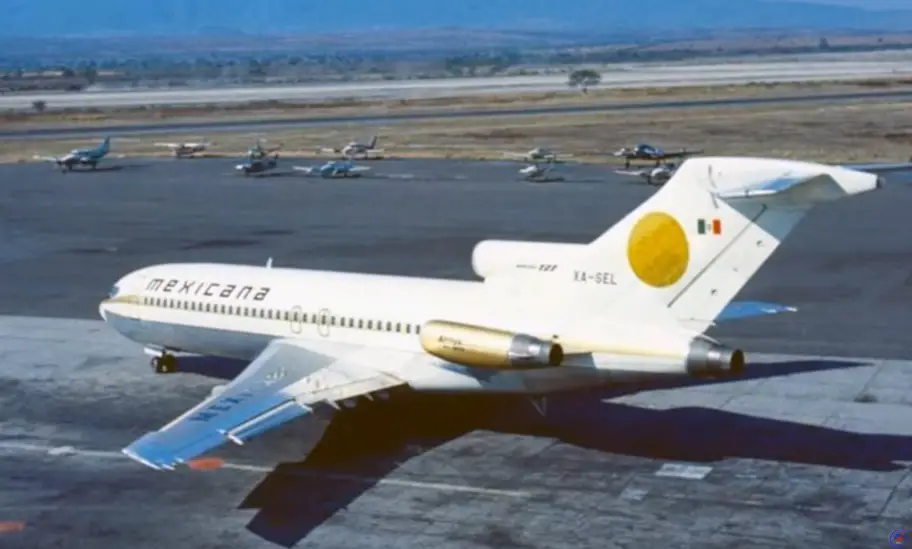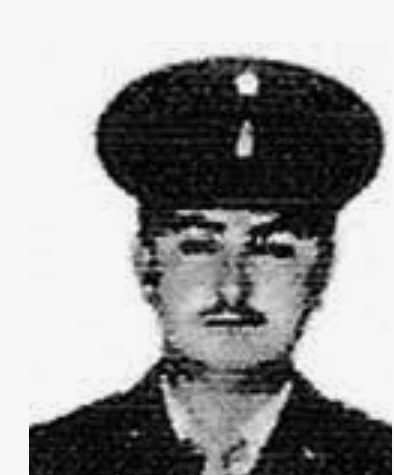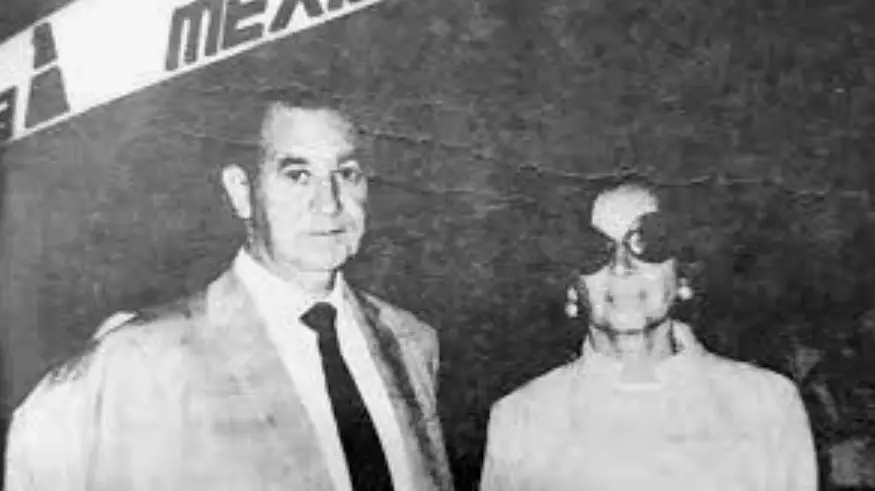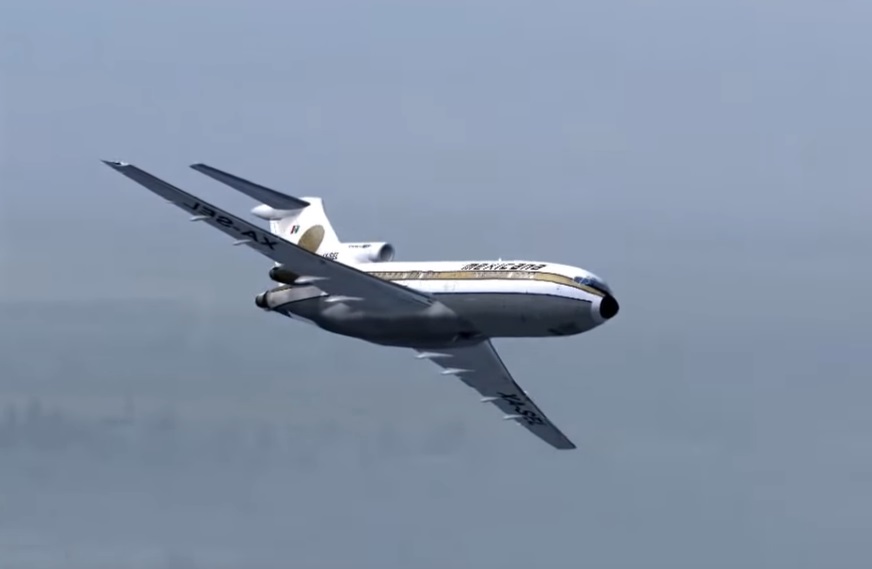Podcast: Play in new window | Download
Subscribe: Apple Podcasts | RSS
 What do a decorated World War II fighter pilot, a 2-time winner of Wimbledon and a controversial up-and-coming politician have in common? They all died on June 4, 1969 in one of the most bizarre aviation disasters in Mexican history. Flight 704 never made it to its destination in Monterrey. The official report released on this incident stated that pilot error was the cause of the loss of the plane and its 79 passengers and crew. Immediately after this incident many questions arose as to what really happened on that fateful day in June of 1969. Researchers are still puzzling over the events of that day and over time several explanations have been put forth to challenge the official story. Before going into the details of the catastrophe, let’s look at the three notable people previously mentioned who were on the doomed flight.
What do a decorated World War II fighter pilot, a 2-time winner of Wimbledon and a controversial up-and-coming politician have in common? They all died on June 4, 1969 in one of the most bizarre aviation disasters in Mexican history. Flight 704 never made it to its destination in Monterrey. The official report released on this incident stated that pilot error was the cause of the loss of the plane and its 79 passengers and crew. Immediately after this incident many questions arose as to what really happened on that fateful day in June of 1969. Researchers are still puzzling over the events of that day and over time several explanations have been put forth to challenge the official story. Before going into the details of the catastrophe, let’s look at the three notable people previously mentioned who were on the doomed flight.
The decorated World War II fighter pilot was Guillermo García Ramos, the captain of the Boeing 727 in service for La Compañia Mexicana de Aviacion known today simply as Mexicana Airlines. García Ramos was part of the elite and highly celebrated Squadron 201 during the war. The squadron, known by the nickname Águilas Aztecas or “Aztec Eagles,” was part of the Mexican Expeditionary Air Force that aided the Allies in  World War II. García Ramos and two dozen others in the squadron flew 96 combat missions, mostly in the South Pacific. Squadron 201 was the first Mexican military unit to see overseas combat. In 2004, President of the Philippines, Gloria Arroyo, awarded the Philippine Legion of Honor award to Guillermo García Ramos posthumously for his efforts in the liberation of the Philippines from Japanese occupation. García Ramos was an excellent pilot with thousands of hours of flight experience under his belt and was considered a national hero.
World War II. García Ramos and two dozen others in the squadron flew 96 combat missions, mostly in the South Pacific. Squadron 201 was the first Mexican military unit to see overseas combat. In 2004, President of the Philippines, Gloria Arroyo, awarded the Philippine Legion of Honor award to Guillermo García Ramos posthumously for his efforts in the liberation of the Philippines from Japanese occupation. García Ramos was an excellent pilot with thousands of hours of flight experience under his belt and was considered a national hero.
The second notable person who died on Flight 704 was Mexican tennis star Rafael Osuna. The Mexico-City-born Osuna won the U.S. Open Championships in 1963, won the 1960 and 1963 Wimbledon Doubles championships, won the 1962 U.S. Open Championships doubles, and led Mexico to its only Davis Cup Final round appearance in 1962. Osuna was also on the 1968 Mexico Olympic team and as tennis was only a demonstration sport, he won no medals but placed first in three events. Osuna was ranked as the Number One tennis player in the world in 1963 and was the only Mexican to be inducted in the International Tennis Hall of Fame. Without a doubt, Rafael Osuna was the greatest tennis player  Mexico ever produced. He was only 30 years old when his life was snuffed out in the Flight 704 crash.
Mexico ever produced. He was only 30 years old when his life was snuffed out in the Flight 704 crash.
The third famous person on flight 704 was perhaps the most controversial. His name was Carlos Alberto Madrazo Becerra. Born in poverty in the state of Tabasco, Madrazo rose through the ranks to become a formidable national political figure. He held minor governmental bureaucratic posts until he was elected governor of the state of Tabasco in 1959. During his 5-year tenure Madrazo was responsible for many public improvements in his home state. These included the opening of hundreds of schools and hospitals and the building of some 200 miles of modern roadways throughout Tabasco. Madrazo also assisted the development of private industry in the state, including the modernization of cacao farming. He is credited with transforming the state’s capital city of Villahermosa from a sleepy tropical backwater to a modern metropolis by encouraging foreign investment and through sponsoring infrastructure improvements. After his term of governor ended, Mexico’s president Gustavo Díaz Ordaz, appointed Carlos Madrazo as president of the PRI, the main political party that had ruled Mexico for decades. Madrazo saw this as an opportunity to democratize the party and to institute broad reforms. Madrazo’s progressive stance made him many powerful enemies in the party and in 1965 he was removed as the president of the PRI. After this removal, Madrazo continued politicking on the sidelines and gathered allies to build back his power base. He also had been stirring up popular support for national reforms, even hinting that he would one day run for president of Mexico. Just when Madrazo’s star was starting to rise again, he died in the plane crash. As an ironic historical footnote, Carlos Madrazo’s son, Roberto Madrazo, would run for president of Mexico in the year 2006 on the PRI ticket. Roberto Madrazo would suffer a catastrophic loss to Felipe Calderón, only getting 22.75% of the popular vote and carrying 0 states in Mexico’s version of the Electoral College.
 Let’s now return to the details of Mexicana Flight 704. The Boeing 727 left Benito Juárez International Airport in Mexico City at 7:02 in the morning on June 4, 1969. The flight to Monterrey would last about an hour. Conditions at Mariano Escobedo International Airport in Monterrey were foggy with a slight drizzle. At a little before 8:00, dialog between the Monterrey air traffic controllers and Flight 704 began. The following was taken and translated from the recordings made by the air traffic control tower.
Let’s now return to the details of Mexicana Flight 704. The Boeing 727 left Benito Juárez International Airport in Mexico City at 7:02 in the morning on June 4, 1969. The flight to Monterrey would last about an hour. Conditions at Mariano Escobedo International Airport in Monterrey were foggy with a slight drizzle. At a little before 8:00, dialog between the Monterrey air traffic controllers and Flight 704 began. The following was taken and translated from the recordings made by the air traffic control tower.
Captain García Ramos began with, “Mexicana 704. We are descending. Please give us traffic and conditions.”
The Monterrey control tower replied, “No traffic is reported in the area. In terms of weather there is a 500 foot ceiling with light rain and fog.”
Captain García Ramos then said, “Aware and pending … Tower, is the Ciénega lighthouse (radio beacon) operating?”
Monterrey control tower replied, “Negative, electricity is out.”
The response from Captain García Ramos was rather strange. He said, “We were thinking of making our descent using the Ciénega de Flores marker, but we have unidentified radio beacon interference, pending.”
If the Ciénega de Flores radio beacon was inactive due to lack of electricity, then what signals was the pilot of flight 704 receiving? What was this mysterious alternate radio beacon? The last live communication from the cockpit was the voice of Captain García Ramos. He stated, “Monterrey in sight, we are on the decline.”
Moments later the plane lost contact with the tower.
Within a half hour of the expected landing, search and rescue teams were dispatched to comb the surrounding area to look for the missing plane or the remains of the missing plane. Investigators soon discovered the wreckage strewn across a large debris field on the side of a mountain called Cerro de Los Tres Picos also known as the Sierra del Fraile. Looters had already been to the site stealing personal belongings among the wreckage when rescuers arrived. The fact that there were people in the remote area close enough to loot the crash site meant that the possibility was high that there were witnesses to the event. The rescuers and investigators were puzzled by what they saw at the crash site. First off, the debris field was across a vast area which was not consistent with a plane crash. Second, there was no impact crater of any kind at the site. Usually when anything falls out of the sky and hits the ground there is a marked indentation in the earth at the point of impact. Another strange thing that search and rescue noted was that not only were there no survivors, there were no intact bodies among the plane debris. It was noted that the politician Madrazo was identified by his jacket on his torso because every other part of his body was missing. Many of the passengers were not identifiable. Some boots-on-the-ground investigators did not see the wreckage of a plane crash but theorized that Mexicana Flight 704 exploded before it hit the ground.
Mexico’s Secretariat of Communications and Transport issued a report on the incident a few weeks later and claimed that the plane crashed into the mountain due to pilot error. The news felt like a slap in the face to those who knew Captain García Ramos. He made that flight to Monterrey from Mexico City and vice versa routinely and he knew perfectly well that there were mountains there. A crash like this would not be typical of someone who had this type of experience. From his squadron days to the day of the accident, García Ramos had 25 years of service in the air and had logged more than 15,000 flight hours. According to the SCT in its official document, the pilot flew over the Monterrey radio beacon without reporting to the ground station. Then the plane made a turn to the right and then another to the left in a continuous descent until it crashed into the Cerro de los Tres Picos. That made no sense, and even more so when it was learned that Captain García Ramos had reported before descending that he could not find a signal from the Ciénega de Flores radio beacon and that he was also receiving signals from a radio beacon that he could not identify. Rumors immediately began to circulate that the plane was deliberately taken off course and purposely destroyed.
Strangely, the plane’s “black box” cockpit voice recorder was recovered in the wreckage intact two weeks after the accident even after investigators had thoroughly combed over the debris field. The last two minutes of communications were missing from the tapes.
 Perhaps the strangest part of this story came from several eyewitnesses who were on the mountain at the time of the crash. They reported seeing two strange men sitting cross-legged with some sort of big black box that looked like a radio or some other kind of transmitter. The two men seemed that they had been on the mountain all night, according to some of the people who saw them. Theories about these two strangers on the mountain are as bizarre as anything you might read on the internet today. Some claim that the device the two men had was a remote control to activate a bomb on the plane or that it was some other sort of weapon used to explode the plane while it was still flying. The two men must have also had some sort of equipment that simulated a radio beacon to lure the plane to the mountain so that they could destroy it with a bomb or energy weapon. Other theories that are more “fringe” claim that the two men were from the future in a very “Terminator” sort of way and came back to blow up the plane because someone onboard would play and important role in future world events. If time travel and the interruption of the timeline were the scenario, who were they out to get? The world-famous tennis player? The famous pilot? Was the politician from Tabasco going to become president of Mexico and then somehow make a very big impact on a global scale? The mind can wander with the possibilities. The more accepted alternative explanation for the events of June 4, 1969 would classify this as a simple clandestine political assassination. If the former governor of Tabasco Carlos Madrazo was destined to be president of Mexico and he had plenty of harsh opposition, it would not be beyond the realm of possibility that the plane was taken down to prevent Madrazo from ever realizing his goal.
Perhaps the strangest part of this story came from several eyewitnesses who were on the mountain at the time of the crash. They reported seeing two strange men sitting cross-legged with some sort of big black box that looked like a radio or some other kind of transmitter. The two men seemed that they had been on the mountain all night, according to some of the people who saw them. Theories about these two strangers on the mountain are as bizarre as anything you might read on the internet today. Some claim that the device the two men had was a remote control to activate a bomb on the plane or that it was some other sort of weapon used to explode the plane while it was still flying. The two men must have also had some sort of equipment that simulated a radio beacon to lure the plane to the mountain so that they could destroy it with a bomb or energy weapon. Other theories that are more “fringe” claim that the two men were from the future in a very “Terminator” sort of way and came back to blow up the plane because someone onboard would play and important role in future world events. If time travel and the interruption of the timeline were the scenario, who were they out to get? The world-famous tennis player? The famous pilot? Was the politician from Tabasco going to become president of Mexico and then somehow make a very big impact on a global scale? The mind can wander with the possibilities. The more accepted alternative explanation for the events of June 4, 1969 would classify this as a simple clandestine political assassination. If the former governor of Tabasco Carlos Madrazo was destined to be president of Mexico and he had plenty of harsh opposition, it would not be beyond the realm of possibility that the plane was taken down to prevent Madrazo from ever realizing his goal.
We may never know what really happened to Mexicana Flight 704. To this day the incident remains shrouded in mystery.
REFERENCES

3 thoughts on “The Mysterious Crash of Mexicana Flight 704”
My grandfather died in this plane crash. I was only 2 years old at the time. But very interesting information if it is all true. My only knowledge over the years has been pilot error attempting to descend over mountains near the airport in rainy conditions with low visibility.
WOW. Thank you for commenting.
Chris – sad to hear about your grandfather in this plane crash. My stepfather – now 85 was supposed to be on that flight as part of his job responsibilities, but he decided at the last minute that he no longer wanted to travel as part of his job, so another employee was sent in his place. I can’t help wonder if your grandfather worked in Peoria, IL with my stepfather?